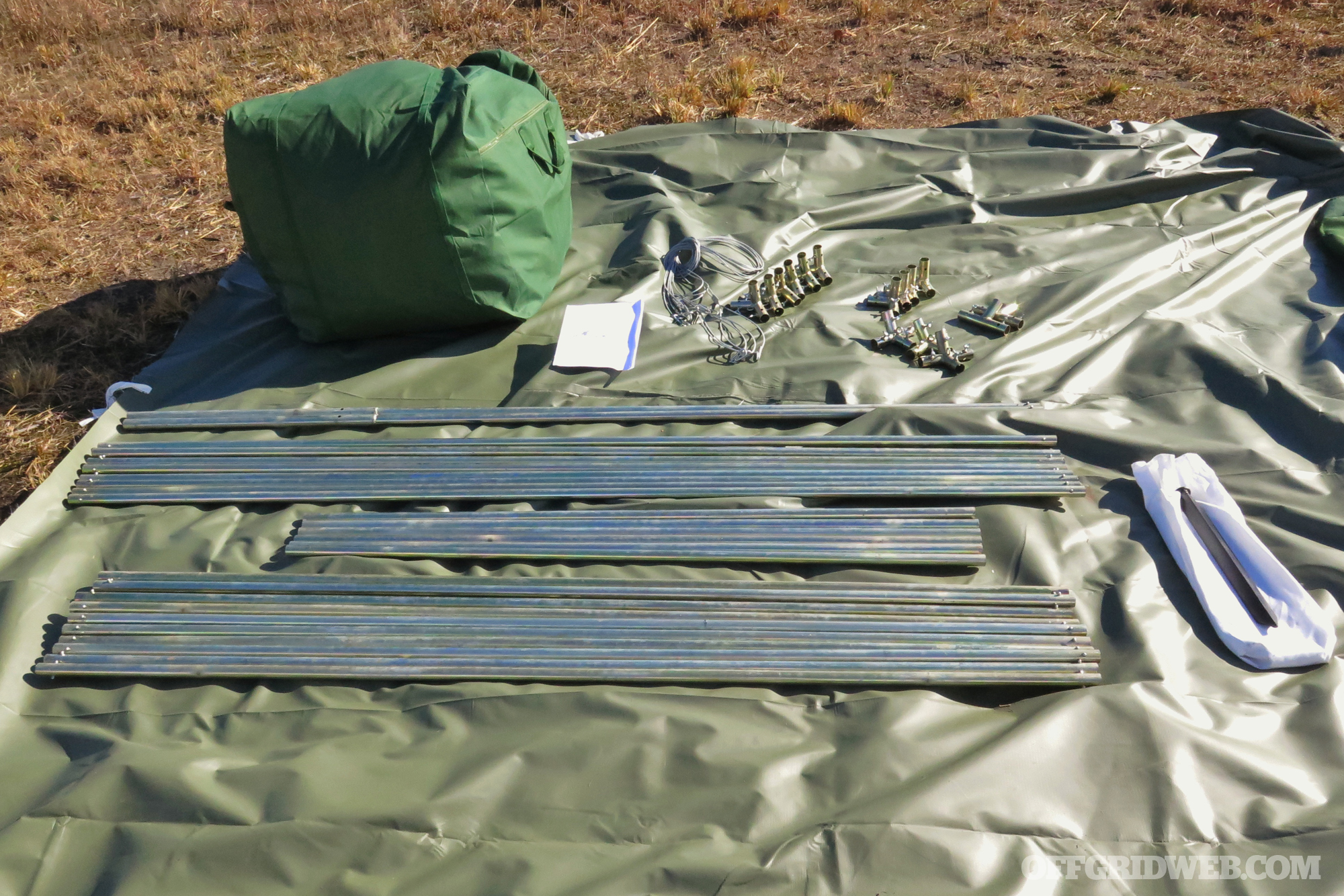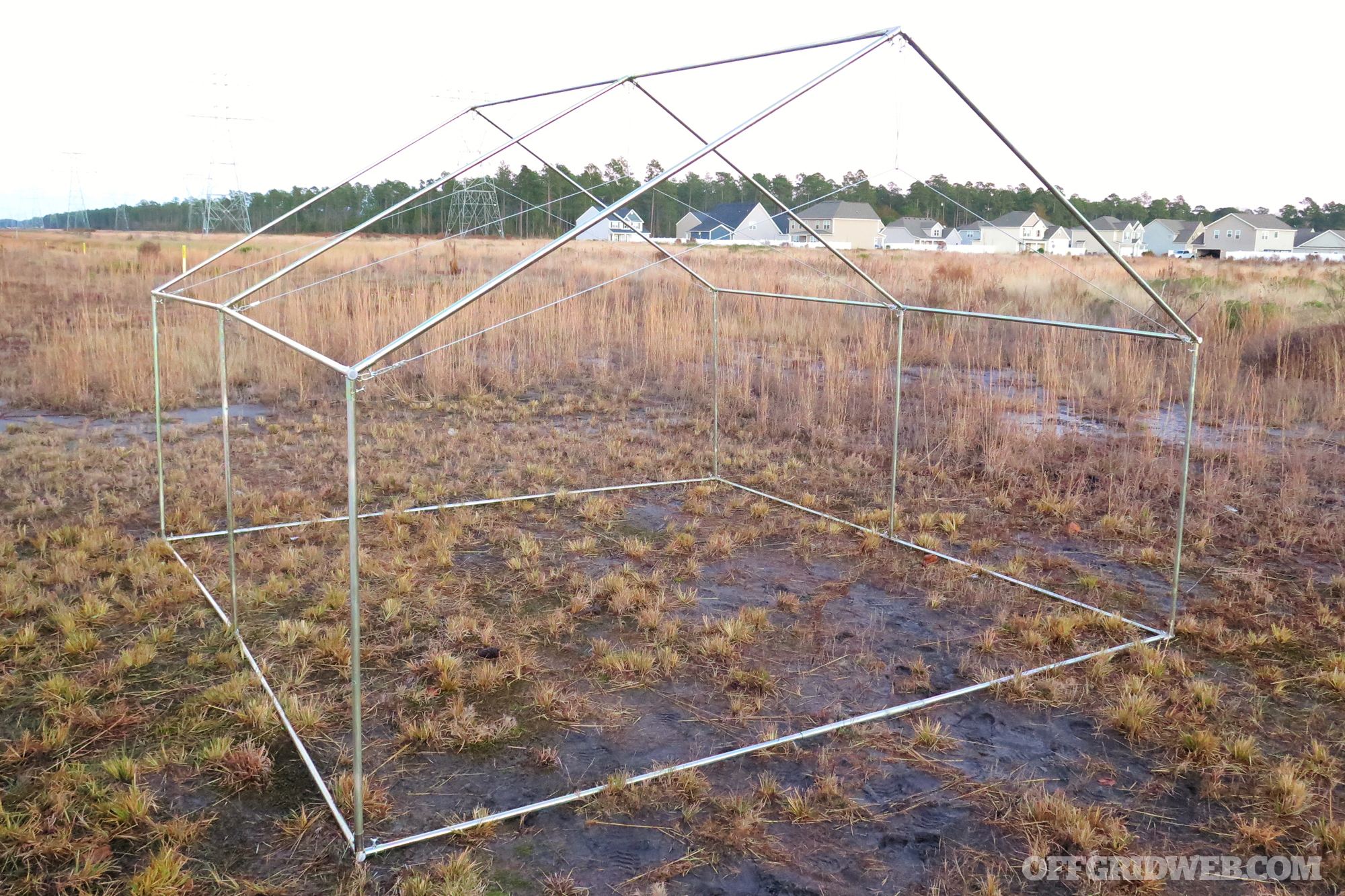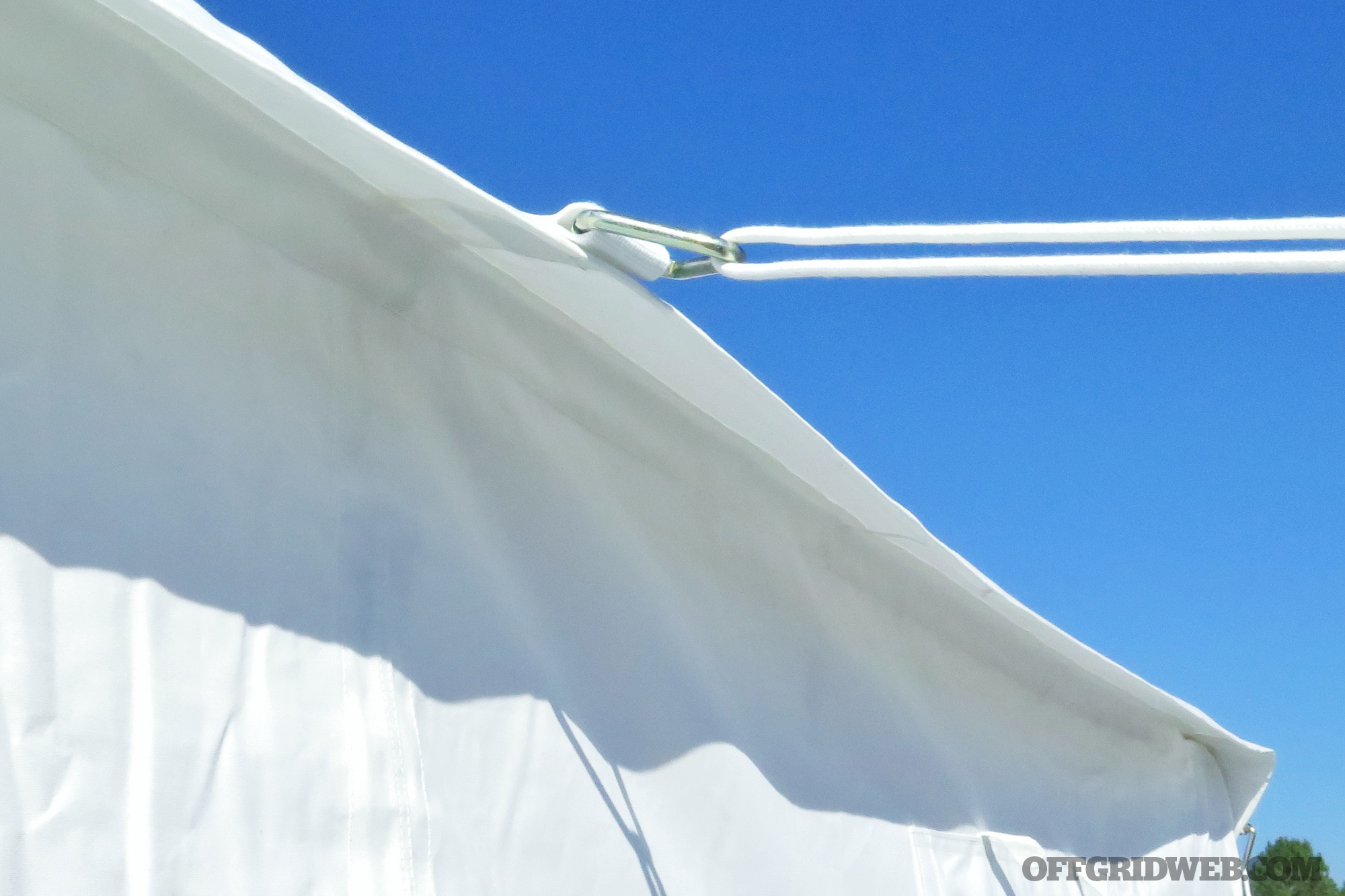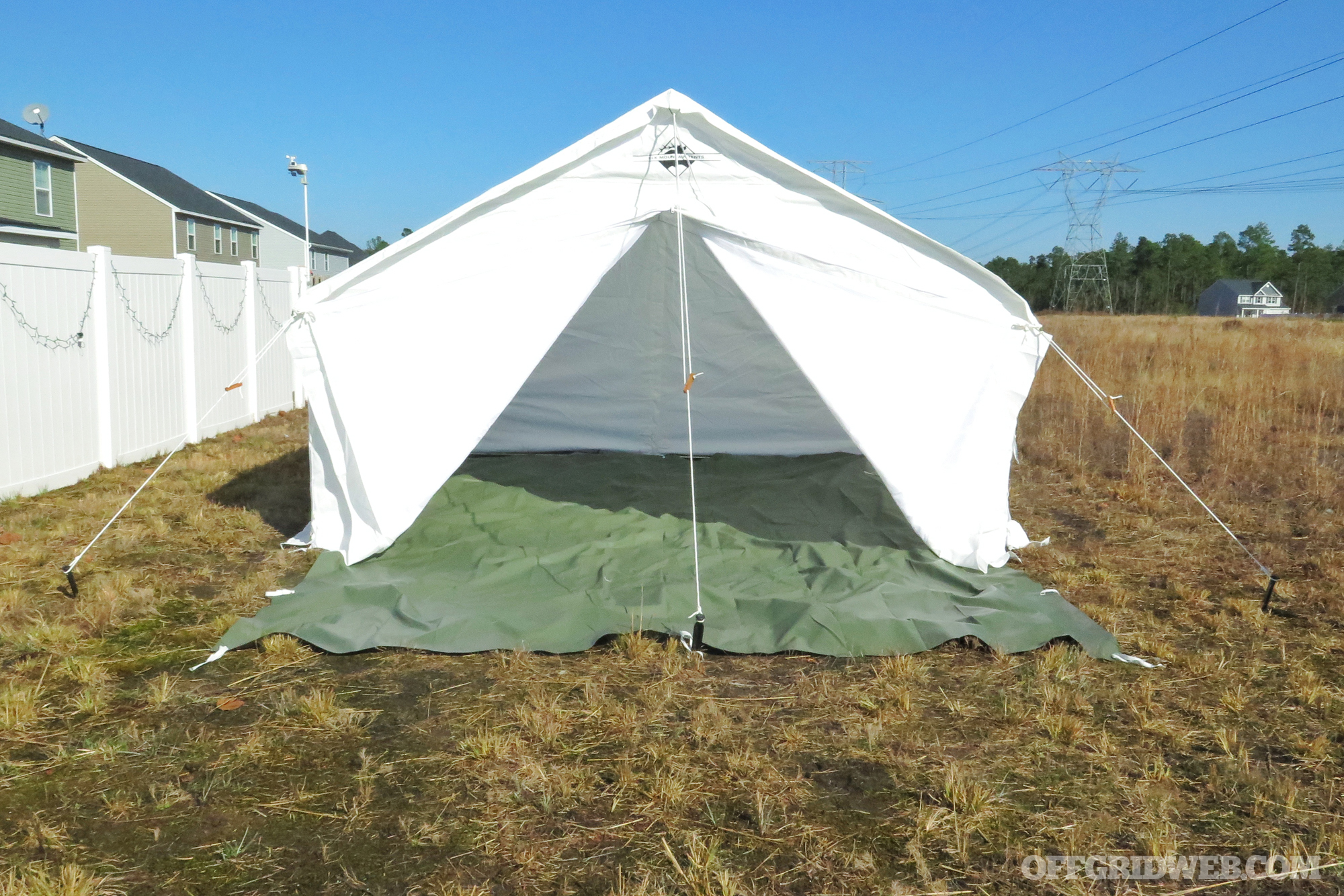RECOIL OFFGRID Gear Review: Elk Mountain Tent – An Extended-Duration Shelter
In This Article
Finding shelter is not only vital to one's survival, it's also vital for peace of mind. Be it for hunting, recreation, or in a survival situation, having a good tent that’s easy to set up makes life easier. If you plan on living out of a tent for an extended period of time, having a comfortable, safe place to unwind and relax at the end of the day is crucial. It’s also ideal to have plenty of space for fellow travelers and gear, rather than returning to a cramped shelter at the end of a long day. There are plenty of manufacturers of large canvas tents on the market, but Elk Mountain Tents decided to do things a little differently.
Whether the primary use for the tent is hunting, camping with family, or as an emergency shelter, these tents offer a roomy space to keep your family and gear out of the elements. We decided to check out an assortment of items from Elk Mountain’s shelter lineup, evaluating first-time setup and long-term viability. This included the following items:
Each tent includes the canvas structure with storage bag, frame angle kit with its own storage bag, wire support system, fiberglass stove pipe jack with cover, eave ropes and tensioners, and eight 18-inch steel stakes. Elk Mountain sells the frame poles and floor separately, which is nice if you have a specific need for the tent, or if you’d rather build your own frame or omit the floor kit to save some cash. We also picked up an optional large canvas storage bag, which is easier to pack the tent into than the compact bag it arrived in.

So, let's take a look at this tent to see what makes it stand out.

Before setting up the tent for the first time, it's a good idea to get acquainted with all the components.
As opposed to traditional cotton canvas, Elk Mountain Tents are made from a polyester synthetic that closely resembles a cotton-blend fabric. This solves several issues present with cotton tents. First, there's no need to weather it before use. This usually requires leaving a new cotton tent out in the rain or soaking it with water and letting it dry, then repeating the process several times to make it waterproof. The second major issue with cotton tents is mildew. Storing a damp cotton tent is not advisable and will quickly ruin a rather expensive tent. The one benefit that cotton offers over polyester is its breathability, not only to let air in but also to help prevent condensation. To address this, Elk Mountain Tents uses a proprietary blend of polyester fibers that are designed to prevent condensation build up.
These tents can be used with or without an Elk Mountain metal frame. The tent comes with the necessary angle kit corner pieces for the frame. These pieces have wing bolts integrated into them to tighten down on the conduit pipes after assembly. To complete the frame, a list of lengths of 3/4″ EMT conduit is provided. You’ll need to buy and cut this material before building the shelter.
Alternatively, Elk Mountain offers a full frame kit for purchase. The nice thing about this frame kit is that the poles come with pole clips installed inside them to enable the frame to snap together, making assembly by yourself a breeze. It took us about 45 minutes to assemble the frame the first time. However, much of that time was spent trying to figure out which pieces went where — a common process with any new tent. We are confident we could get that time down to around 20 minutes.
Along with the tents and frame kits, Elk Mountain Tents offers a selection of accessories for purchase. These include a rubberized PVC floor kit that ties into the base of the frame. You may be asking yourself, how can a tent come without a floor? Well, having no integrated floor makes assembly much easier, saves on cost of the tent itself, and allows you to remove the floor and wash it separately. Other accessories include storage bags, stoves, tent flies, and other upgraded equipment.
It is essential with any piece of equipment to familiarize yourself with it before you intend on actually using it. With that in mind, we decided to do a dry run and assemble the tent before our first trip in it. This was a wise choice, because it took some time to figure it all out.
The directions that came with the tent were not very well written or descriptive. So, after taking inventory of the components, we began assembly by laying out the floor pieces. We then built the individual rafters and assembled them into the roof of the tent.

We assembled the base of the frame first, then the rafters, and finally connected them with the six side poles.
Before lifting the roof up and installing the side poles, we connected all of the tensioning cables from one side to the other. This stiffens up the whole tent overall and helps it keep its shape. Finally, we lifted the roof up and inserted the side poles into the floor frame and roof.
Once the frame was fully assembled, we grabbed a helper and laid the canvas over the frame. This was a challenging task as the canvas weighs roughly 50 pounds and was quite unwieldy. We’re sure it would be a real struggle if the wind picked up. However, you probably won’t be alone if you’re setting up a tent this large — make use of all those helping hands.

Extra material creates eaves over the walls to prevent water from running down the side of the tent.
With the canvas fully draped over the frame, which was done with the poles on one side removed for ease of placement, we adjusted the canvas to fit properly. Then the corner and side tie straps were tied around the frame. To finish it off, the tie-downs were staked into the ground and pulled taut.
Once it was all set up and secured, the tent was very stable. This was a good feeling knowing that our potential home for an extended period of time would not be blown down by a stiff breeze.

The floor kit extends out past the front of the tent to create a porch area to store gear away from the dirt.
The Elk Mountain Tents canvas wall tent has a lot of useful features to help make long stays inside quite comfortable. Our model features a full front screen door. This is great for summer and early fall trips.
Above: Our 13×13 tent included two windows on each side of the tent. One thing to note is that these can only be opened or closed from the outside.
All of the company's tents feature Velcro opening windows — our 13×13 tent includes 4 windows, each with built-in screens. For trips during colder months, all of their canvas tents include stove jacks built into the roof, which can be cut to the size of your stove pipe and then covered with an included Velcro cover. The walls on the tent have an extra six inches of cloth at the bottom to create a sod cloth to seal the bottom of the tent.
Above: Every Elk Mountain canvas tent comes with a stove jack that can be cut out to be used with a stove pipe. There is also a Velcro cover that seals it if not in use.
Ridge openings at the front and back can be opened and closed with a string system for added ventilation. This also helps prevent the aforementioned condensation buildup issue. Unfortunately, these ridge vents do not have screens built in, which is quite odd seeing as that would be an open invitation to bugs, especially the biting variety. Overall, however, the tent was well made, fit the frame beautifully, and was very secure and most importantly water-tight. This will give us a comfortable place to stay with the whole family during any season.
Above: Both front and back ridges have openings to help ventilate the tent. We wish these were screened to help keep bugs out in the warmer months.
Elk Mountain Tents sought to take a new approach to a traditional canvas tent with some useful added features. We have to say they accomplished that goal. If you're looking for a large canvas tent and dread the thought of maintaining cotton fabric, check out what Elk Mountain Tents has to offer. For more information on this tent and all of Elk Mountain Tents' other products, visit them online at elkmountaintents.com.
Pros:
Cons:
*Update – 12/24/19: Elk Mountain Tents let us know that the instructions for the tents have recently been revised with more detailed diagrams. We're glad to hear they're listening to user feedback and implementing it to improve their products.
 STAY SAFE: Download a Free copy of the OFFGRID Outbreak Issue
STAY SAFE: Download a Free copy of the OFFGRID Outbreak Issue
No Comments